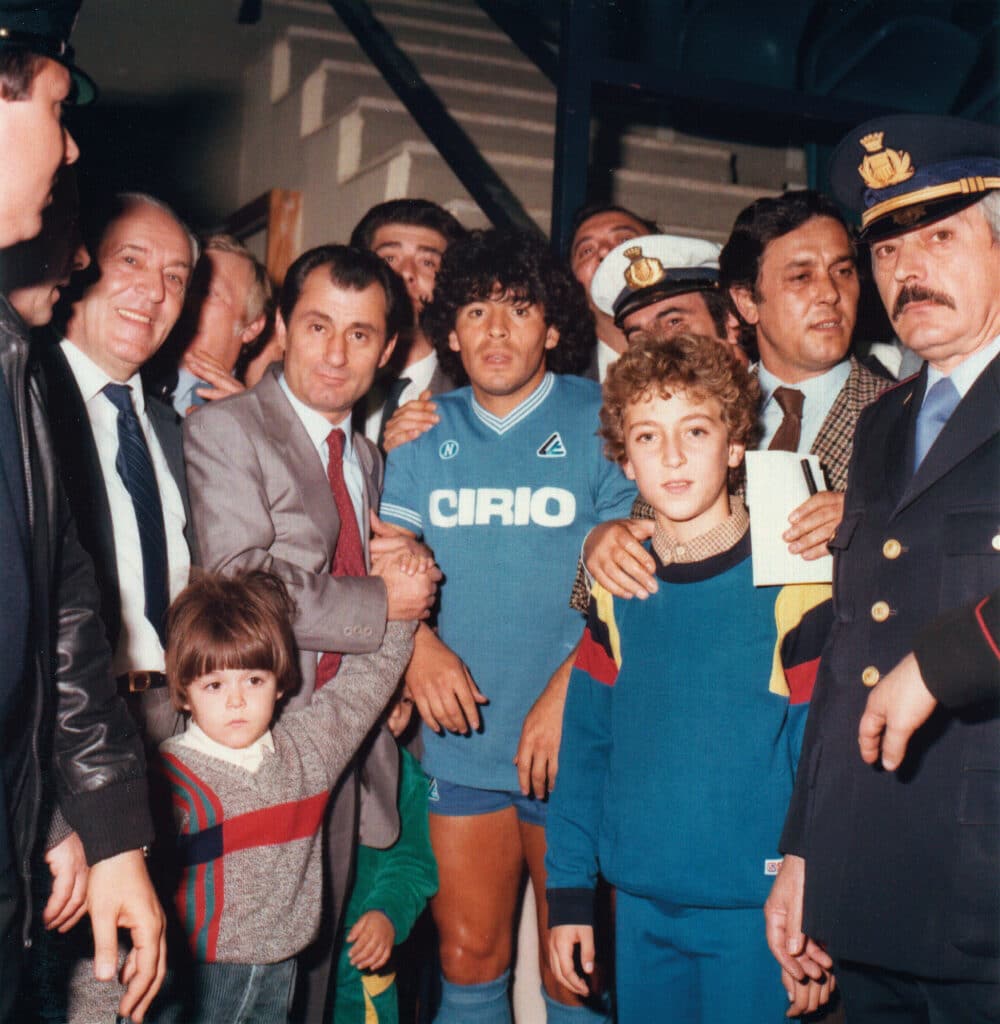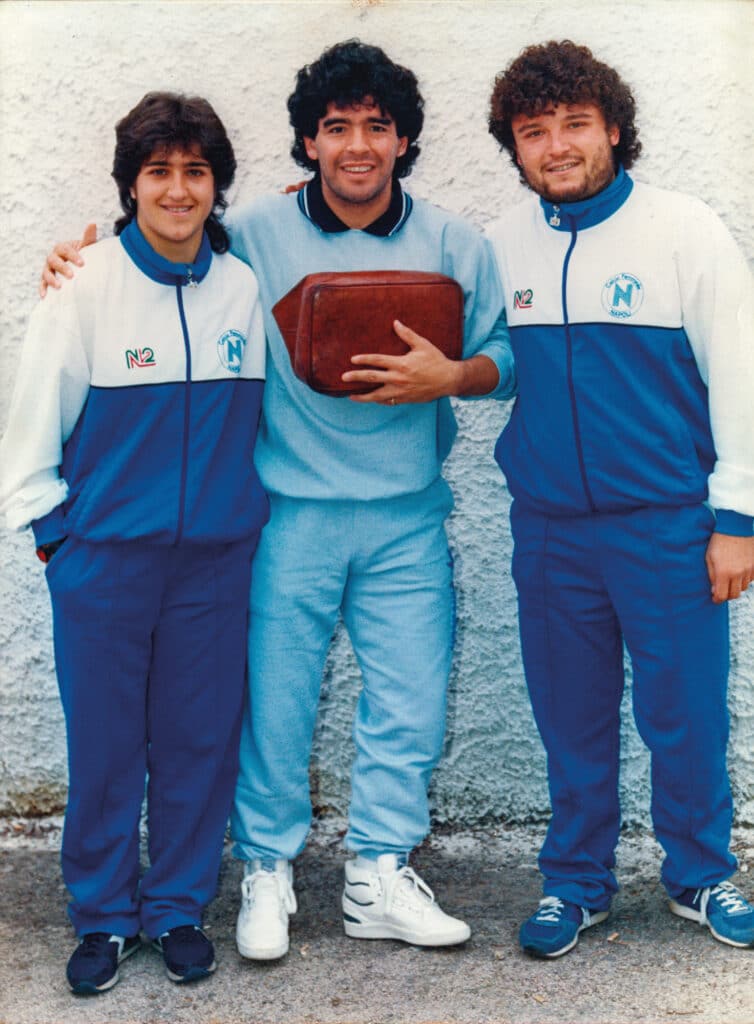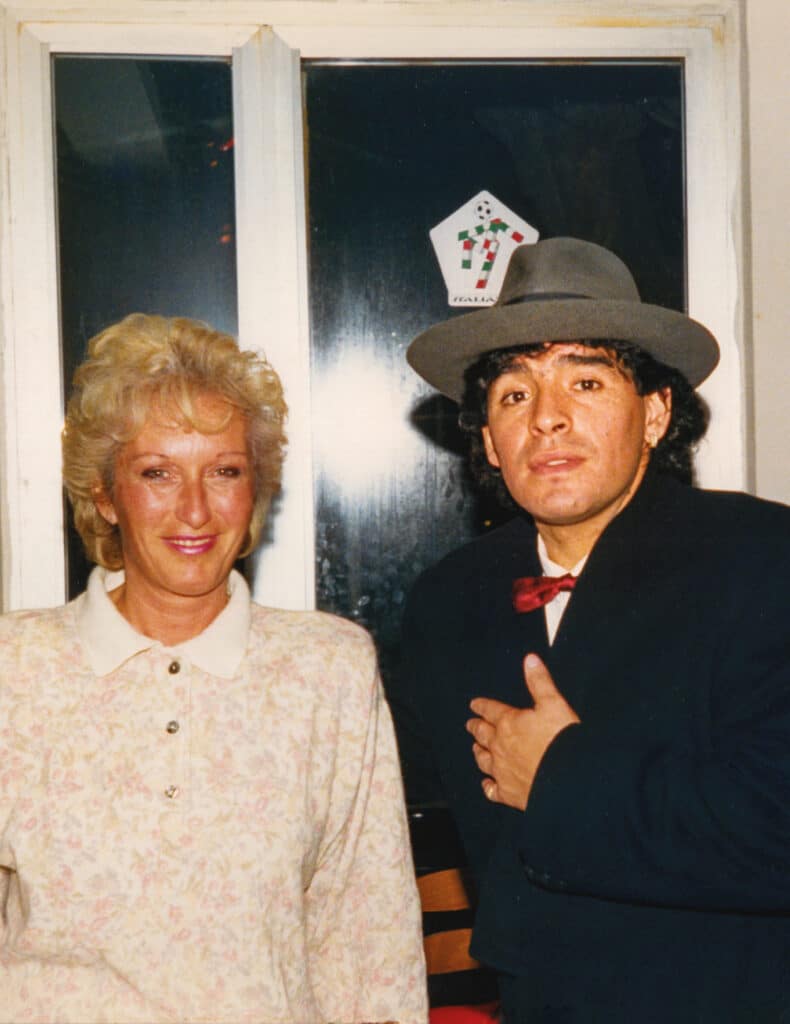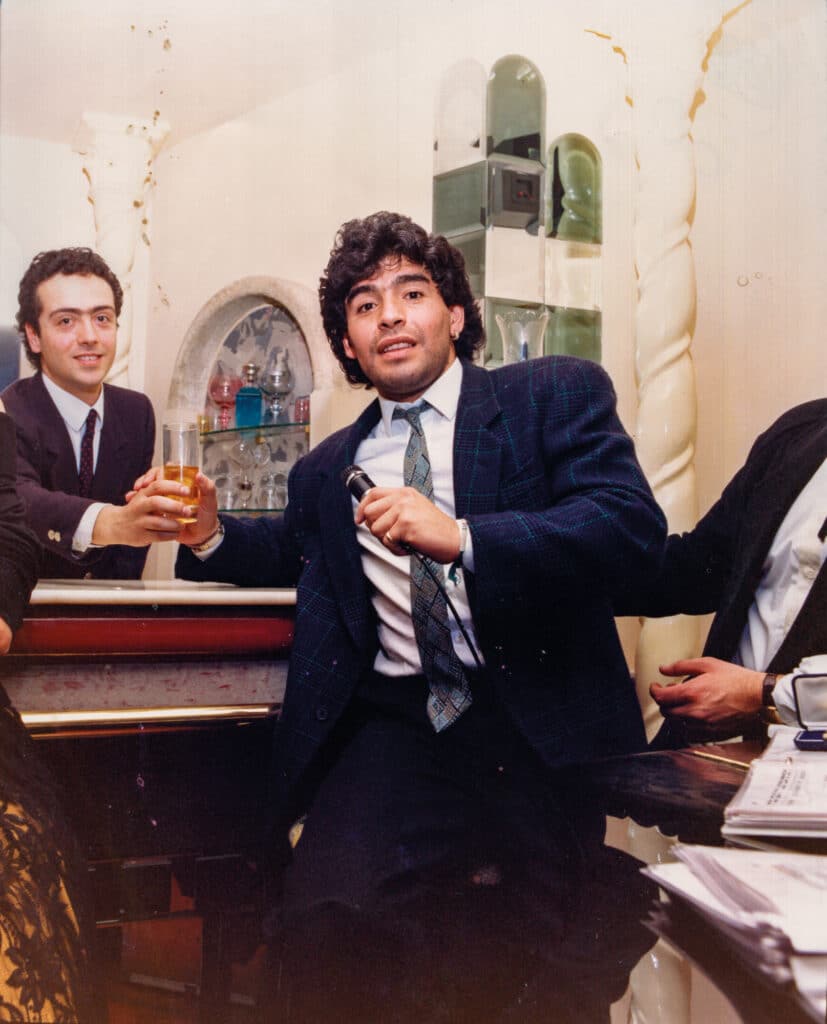In 1984, the Argentine footballer Diego Maradona was transferred to Naples and would become much more than just a football player. His time in the Italian city marked an era, not only on the field but also in the daily lives of Neapolitans. The book La Foto con Dios by Carlo Rainone retraces those years through photographs taken by anonymous individuals. These images capture Maradona in ordinary moments between 1984 and 1992: leaving a training session, sitting at a restaurant table, chatting with a passerby. Often kept as precious souvenirs by their authors, these photos testify to the unique bond between the man and the city.

Frozen moments
When Maradona arrived in 1984, Naples was struggling. The SSC Napoli team was fighting to stay in Serie A, Italy’s top division, and the city was going through a difficult economic period. Maradona quickly became a central figure. He represented sporting hope but also a form of recognition for a city often relegated to the background in Italy.
In this context, every encounter with him became an event. Many sought to obtain a photo—a tangible proof of their proximity to him. At a time when images were not as accessible as they are today, taking a picture required a camera, film, and access to the player. Those who managed to capture a moment with Maradona often kept the photo as a priceless treasure.
The book’s author, Carlo Rainone, emphasizes the importance of these photographs by calling them “relics” and mentioning how they were preserved in Neapolitan living rooms, offices, and wallets.
Stories of an encounter
In June 1986, Michiho Ando, a young Japanese woman, was watching a football match on television at home. She did not know much about the sport, but one player caught her attention. He wore the number 10 jersey, dribbled past several opponents, and scored a goal. His name was Diego Maradona.
Curious, she did some research and discovered that he played for Naples. She sent a letter to the club asking how to buy a ticket for a match. Her letter was published in an Italian newspaper, and Neapolitan supporters wrote back to invite her. At 21, she traveled alone to Naples, attended a match, met fans, and eventually saw Maradona. A photograph immortalized the moment.
In Naples, eight-year-old Annalisa Dello Russo was preparing for her First Communion. Her father, who knew people close to Maradona, arranged a surprise. He blindfolded her, led her into a garden, and then asked her to remove the blindfold. In front of her, Maradona stood, looking at her with a smile. He placed a hand on her shoulder, congratulated her, and then left. A picture was taken and remained displayed in the family home for years.

Gaetano, a blind boy, dreamed of meeting Maradona. One day, his parents took him to the San Paolo Stadium, where the player was training. When he found himself in front of him, Gaetano did not speak—he simply reached out his hand. Maradona shook it. Later, Gaetano would say that he had also met the Pope, but that the emotion he felt that day with Maradona was different.
In another neighborhood of Naples, Antonio Luise grew up in a family that owned a cheese shop. His father knew Maradona and kept several objects the player had given him: jerseys, armbands, even cutlery used by the footballer. For Antonio, Maradona was part of everyday life.
These photos were not just personal memories. Many of them were enlarged and displayed in shops, restaurants, and living rooms. Some were slipped into wallets or hung on walls—like a familiar object reminding people of a shared experience.
Beyond his sporting achievements, Maradona left his mark on the city with his presence. He allowed himself to be photographed without difficulty, accepted requests, and shared moments with strangers. These images circulated, were passed down, and became part of Naples’ collective memory. To express his attachment to the city, Maradona once declared: “I am black or white, I will never be grey in my life.”
A historic period
The Maradona years coincided with a transformation for Naples. His presence led SSC Napoli to win several titles, including its first Scudetto (national championship). The city’s atmosphere changed. Many supporters speak of those years as a unique moment when Naples found itself at the center of attention—not for its struggles, but for its successes.

The photographs in La Foto con Dios further document this era. They show a player often surrounded, sometimes in a hurry, but always accessible. They tell the story of a city that, for a few years, lived to the rhythm of a man and a ball. “Naples is my home,” the footballer said at the time. “It is the people who have loved me the most. I will never forget.”
La Foto con Dios, by Carlo Rainone, is published by Editions Contrejour, and is available for €35.




